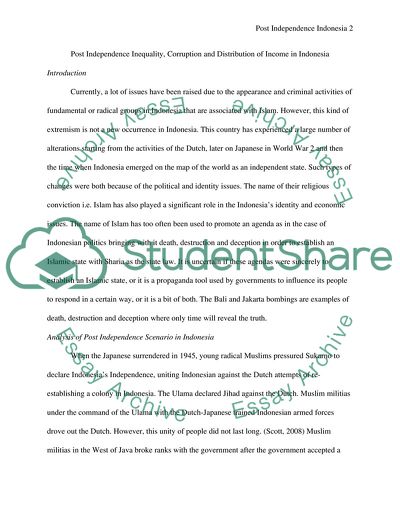Cite this document
(“Inequality, Corruption and Distribution of Income in Indonesia (Post Term Paper”, n.d.)
Inequality, Corruption and Distribution of Income in Indonesia (Post Term Paper. Retrieved from https://studentshare.org/miscellaneous/1565759-inequality-corruption-and-distribution-of-income-in-indonesia-post-independence
Inequality, Corruption and Distribution of Income in Indonesia (Post Term Paper. Retrieved from https://studentshare.org/miscellaneous/1565759-inequality-corruption-and-distribution-of-income-in-indonesia-post-independence
(Inequality, Corruption and Distribution of Income in Indonesia (Post Term Paper)
Inequality, Corruption and Distribution of Income in Indonesia (Post Term Paper. https://studentshare.org/miscellaneous/1565759-inequality-corruption-and-distribution-of-income-in-indonesia-post-independence.
Inequality, Corruption and Distribution of Income in Indonesia (Post Term Paper. https://studentshare.org/miscellaneous/1565759-inequality-corruption-and-distribution-of-income-in-indonesia-post-independence.
“Inequality, Corruption and Distribution of Income in Indonesia (Post Term Paper”, n.d. https://studentshare.org/miscellaneous/1565759-inequality-corruption-and-distribution-of-income-in-indonesia-post-independence.


